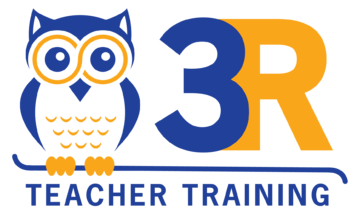Walk into nearly any math classroom in the United States, and you're likely to see a familiar scene – the teacher demonstrating solutions to sample problems on the board, followed by students working independently on practice problems, often from their textbooks. This repetitive structure makes up the core of most math lessons on American soil; research indicates as many as 95% of U.S. classrooms rigidly follow this limited two-part format day after day.
Yet instruction looks remarkably different in classrooms abroad, particularly in countries lauded for their students' high mathematics performance. Rather than jumping straight into direct instruction, teachers in these high-achieving nations like Singapore dedicate upwards of half the class period or more to collaborative problem-solving activities that allow students to reason through challenging questions, invent solution pathways, and grapple with key concepts before any formal teaching takes place. This “guided discovery” phase aims to first activate students' critical thinking and taps into their innate curiosity, setting them up to deeply integrate the forthcoming lesson.
Singapore's matched success in both teacher training and math achievement on prominent global assessments like PISA has drawn considerable international attention. Unlike the fragmented teacher prep landscape in America, Singapore ensures consistent rigor and messaging by funneling all of its teachers through the elite National Institute of Education (NIE) at Nanyang Technological University. There, educators master reach specific techniques for lesson planning and delivery tailored for Singaporean classrooms – most notably, the research-backed “Singapore Math” 3-Part Lesson.
Originally adapted from groundbreaking methodologies developed in Japan, Singapore's signature 3 Part Lesson format marks a profound divergence from conventional math instruction. Meticulously structured to align with cognitive science on how students best acquire new skills, the immersive three-part framework serves as the backbone for mathematics education across all of Singapore’s highly effective schools. Each phase works synergistically to set students up for deep, enduring comprehension and competency. While seemingly simple in theory, skillfully leveraging each segment requires considerable expertise – hence Singapore’s systematic training for all up-and-coming math teachers.
Let’s explore what sets this tested teaching tradition apart:
The Anchor Task
Every Singapore Math lesson kicks off with an Anchor Task, an intriguing open-ended challenge that immediately hooks students’ interest while activating their prior knowledge. This thoughtfully constructed lead-off activity – mathematically rich yet readily accessible for learners of all levels – steers the subsequent learning and forms a cognitive reference point to build upon moving forward. Teachers leverage the Anchor Task to spur student collaboration, guide discovery of key ideas and procedures, and surface any gaps in understanding needing attention.
While superficially straightforward, crafting just the right Anchor Task involves considerable intentionality. Teachers aim to pose problems tied to current curriculum goals yet rife with entry points to unleash the class’s existing capabilities. Allowing pupils to freely strategize and grapple with these engaging prompts for an extended period before formally introducing structured techniques ultimately sets the stage for enhanced comprehension once core lesson concepts are presented afterwards. Probing student solutions generated during the Anchor Task later enables educators to neatly bridge emerging ideas into targeted instruction.
Guided Practice
Once students have deeply explored the initial challenge and developed preliminary problem-solving approaches, the teacher shifts gears into carefully scaffolded explanations, modeling target skills, and verification of comprehension. This strategic instruction doesn’t supplant students’ nascent ideas but rather builds purposefully on dawning understandings surfaced during the Anchor Task. helped solidify emerging comprehension through Guided Practice. Here, the teacher circulates to confirm correct grasp of lesson techniques, remedy lingering confusion, and provide just-in-time support tailoring guidance to individuals’ needs – essential formative assessment informing next steps. Singapore Math classrooms buzz with productive activity rather than passively absorbing information. Even when directing students through mathematical procedures, teachers use interactive questioning and hands-on learning aids to keep their audience discussion. engaged.
Independent Practice
After confirming students have acquired the intended skills through supported practice and reinforcement, the teacher will then assign independent work to allow pupils to apply their freshly honed knowledge without aid. This is often assigned as homework but may occur in classrooms with time to spare. Either way, the preceding Anchor Task and Guided Practice equip students to productively practice independently, driving home concepts secured through collaborative experimentation and targeted remediation. Since caregivers often assist kids in math homework help, Singapore Math teachers take care to confirm pupil readiness before releasing problems for home practice. Without that assurance of capability, unfinished work or parent frustration may result.
In Singapore, this signature 3 Part Lesson blueprint sets the pace for active, high-yield mathematics instruction across all schools.ANCHOR students' interest, GUIDE them toward core understandings, then RELEASE them to demonstrate self-reliant skill application – and the formula works! Beyond impressive test results like Singapore’s top PISA math ranking, close inspection of its classrooms reveals confident problem-solvers, not passive receptacles of information. But this success does not arise by accident or luck. Rigorous, uniform teacher training ensures correct implementation of student-centered methods proven to unlock mathematical insight. Paired with a rigorous national curriculum and high expectations for universal math literacy, Singapore’s commitment to the 3 Part Lesson fuels mathematics achievement among all its youth. And with abundant data validating this instructional mainstay, education leaders worldwide eye Singapore’s model hoping to spark similar outcomes back home.

Educational studies consistently validate placing rich, collaborative problem-solving activities at the heart of math instruction through vehicles like Singapore's signature Anchor Tasks. Rather than rushing to model procedures, math lessons globally shown to foster heightened student outcomes dedicate substantial time upfront to student-centered exploration.
Research highlights brain-based benefits driving this priority, including:
– Activating prior knowledge solidifies new connections
– Grappling with challenges sparks innate curiosity
– Peer discourse strengthens conceptual ties
– Relating concepts to tangible scenarios aids retention
In Singapore, these key drivers motivate the prominent Anchor Task phase launching every math lesson. Beyond superior assessment performance like topping PISA's math rankings, Singaporean students exhibit creative mathematical thinking, flexible problem-solving, and confidence tackling unfamiliar questions. Anchor Tasks help instill these transferable skills from an early age.
Crafting High-Impact Anchor Tasks
When designing Anchor Tasks to unveil student thinking and set the stage for targeted instruction, teachers should ensure activities exhibit traits like:
– Tie to current learning goals while allowing space for multiple solution avenues
– Promote productive struggle and peer discourse
– Accessible for a diversity of ability levels
– Rich enough to support extensive visualization, manipulation and exploration
– Relatable to students' lives and interests to boost engagement
Additionally, keep the endgame in mind – tasks should surface preconceptions to address and solidify nascent understandings to leverage moving forward. Avoid overly simplified exercises or those supporting a sole solution pathway. Promote collaboration, not isolation.
Sample Anchor Tasks
Grade 3 Fraction Concepts
– Represent fractions with a classroom model – Have pairs of students use themselves, manipulatives or drawings to demonstrate examples of 1/4, 1/3 and other basic fractions divided into equal parts. Then have them switch models with peers to evaluate other approaches.
Grade 6 Ratios & Proportions
– Plan a class garden with model representations – Provide graph paper and measuring tools for teams to draft possible garden dimensions capable of yielding set vegetable totals, foregrounding multiplicative thinking.
Grade 8 Linear Equations
– Find lines of best fit – Have students determine lines approximating real-world data you provide (e.g. height vs age), using multiple approaches like visual estimation, point plotting, physical tools like sticks and strings, or equations. Compare ending models.

